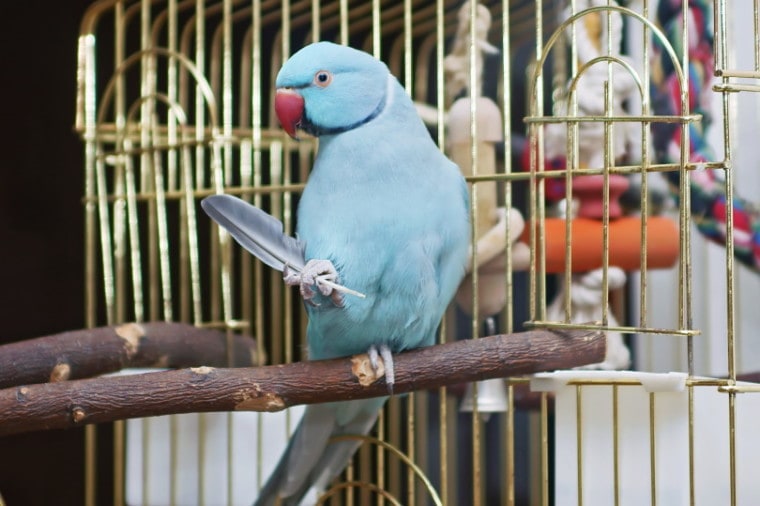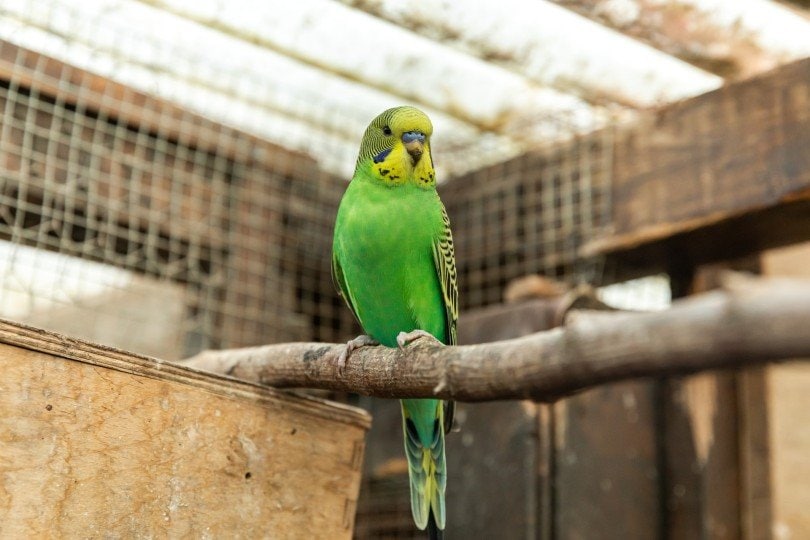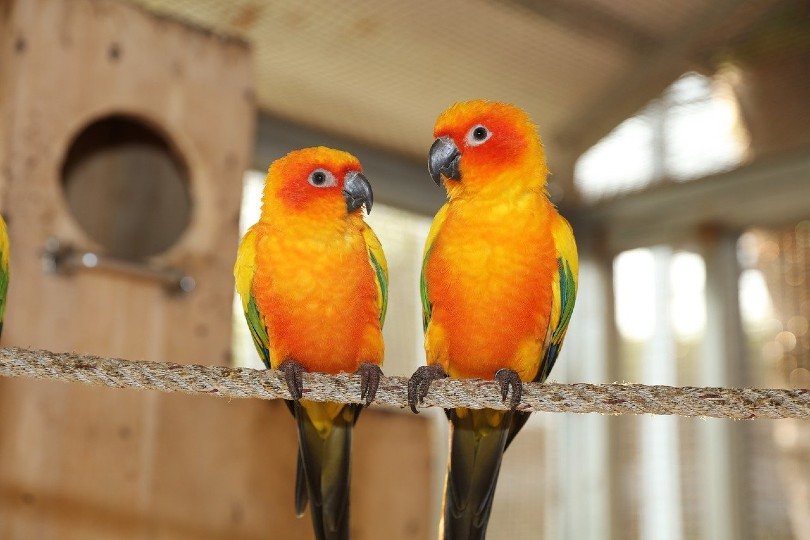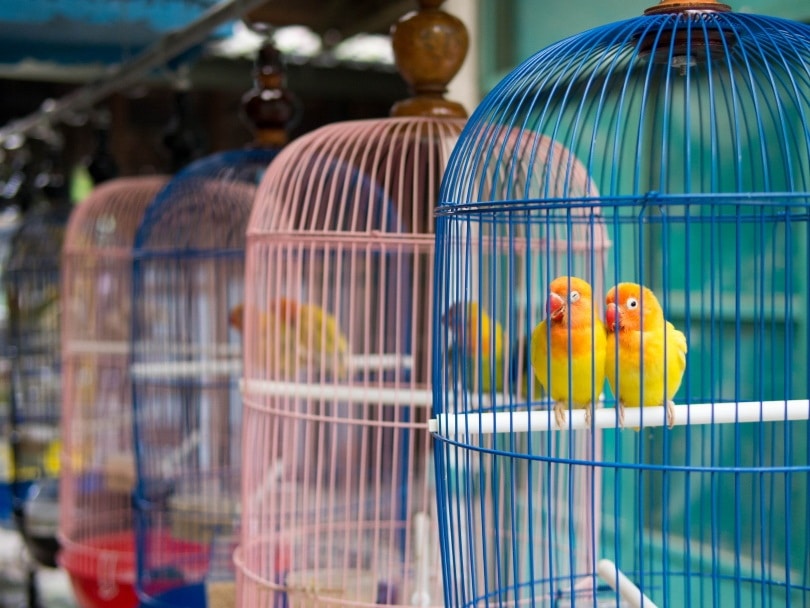
Are you considering inviting a bird into your home? Perhaps, you want the first pet for your child that is easy to raise and relatively long-lived. You can’t go wrong with a parakeet or budgie. They are sweet pets that are intelligent and may even pick up a few words to boot. Nearly 6 million American households have birds in their homes, numbering over 20 million pets.
Your parakeet’s cage is the most important decision you’ll make. It has a direct impact on your pet’s physical and mental well-being. It can also affect your family’s enjoyment with their new avian friend. Bear in mind that unless you let your Budgie out a lot, most of its day is in the cage you select. The vital criteria to consider include type, construction, placement, accessories, and of course, size, which should be at least 18”L x 18”W x 24”H.
Before You Start
The first thing you should think about is whether you’re going to get one or more parakeets. Budgies are social birds that thrive with interaction, whether it’s with you or other birds. Living in pairs or especially groups is par for the course in their native Australia. The decision boils down to how much time you’ll spend with your pet.
If you anticipate interacting a lot with your parakeet, having one bird is an option. Remember that you’re replacing an avian companion, so it’s essential that your playtime is consistent. If you aren’t sure if you can make it a commitment, do your Budgie a favor, and get a second—or third—bird. However, that means a larger cage and a bigger investment. We suggest giving it careful consideration.
The 5 Tips How to Choose the Right Cage Size for Parakeets
1. Pick a Place for the Cage
The spot you want to put your parakeet’s cage can trump other factors when choosing the right cage size. Bear in mind that budgies aren’t the tidiest of pets. Seed hulls are a fact of life when owning any bird, especially if you feed it a mix. Some will pick out the ones they like and toss out the rest. There are measures you can take to minimize it with cage walls or a preferred seed blend.
However, that also means that a cage in an office with a computer nearby might not be the best fit. The other thing to think about is your parakeet’s behavior. These birds are chatty. If you think you’ll find it distracting, that also nixes a workspace. They also have a particular schedule. They need downtime, preferably with a cover over the cage.
That makes the man cave or playroom an unwise choice since you’ll end up disrupting your Parakeet’s rest time. We recommend giving it a lot of thought because your pet will prefer a regular routine without disruptions or moving to another room.

2. Measure the Available Space With Some Latitude
The best size for a parakeet cage is the biggest that your chosen space can accommodate. Period. Therefore, we suggest breaking out the tape measure and figure out how much room you have to spare. Don’t forget to add a wide perimeter around the cage for the aforementioned flying seed and hulls. It’s probably wise to place it away from any heat or air conditioning vents, too, for the same reason.
You should also think about the airflow of the room. Parakeets are sensitive to drafts. Avoid placing the cage near windows or doorways. The same caution applies to vents that can disrupt the airflow. A heat vent spewing out dry air will do the same thing to your Budgie’s skin and feathers.
3. Consider the Minimum Space You’ll Need
With the above info in mind, the next thing to think about is the minimum-sized cage you’ll need for your parakeet. There are two factors that can guide your choice. First, and perhaps the most important one, is the wingspan of your parakeet. They are smaller birds, but their outstretched wings can measure anywhere from 11–19 inches.
Remember that parakeet feathers are vascularized. That means they have a blood supply going to them. If they break a shaft on the bars of a cage, it’s going to bleed—a lot! Think of that as your pet is still flying around with its injury. Not pretty.
Second, birds don’t just fly forward and backward. They dart around a lot. In Australia, they’re maneuvering around trees and shrubland. The minimum recommended size 18”L x 18”W x 24”H to give your pet enough room to get exercise and give it enough room to avoid injuring its feathers. You’ll see products called flight cages, which are appropriately named because of their size.

4. Plan for What You’ll Add to the Cage
Of course, you’re not just going to put your parakeet in a cage with nothing else. You’re going to add food and water bowls, perches, and of course, toys. Your budgie will also need a cuttlebone to polish its beak. You should also account for space for hiding places and a hanging millet sprig as a treat. The essential thing to remember is that you can’t go wrong with a larger cage.
You can easily calculate the volume of the cage by multiplying the three dimensions. Subtract the space that each extra piece will take up to give you a feel of how much larger a space your parakeet will need.
5. Balance the Size with the Maintenance of the Cage
Let’s face it. Parakeets are messy. When considering the size of your pet’s cage, also think about the maintenance. You’ll need to clean everything at least once a week to create a healthy environment for your budgie. Take into account how easy the size will make it for you. Look for a product with multiple doors or access points to make your job less cumbersome.
You’ll find many standard-sized cages and associated paper for the bottom tray. Of course, there is a price for the convenience, but it something to factor in with the product you choose. We suggest considering what your routine will be. You may find that getting a cage on rollers is easier to clean if you have the room for it.
Ultimately, you must consider how the cage will fit into your selected place no matter what size you choose. Accessibility and a healthy environment are the primary factors. Remember that you’re picking your parakeet’s home, where it’ll spend most of its days.

Conclusion
A cage is a must-have for a parakeet. It provides home turf that can help your bird feel secure in its new digs. Buying one for a budgie is an entirely different matter than getting a crate for a dog. It is your pet’s home. Therefore, we suggest going with larger instead of smaller to give your parakeet room to stay active and healthy as it would in its native land. The takeaway is that size matters.
Featured Image Credit: Eudyptula, Shutterstock









